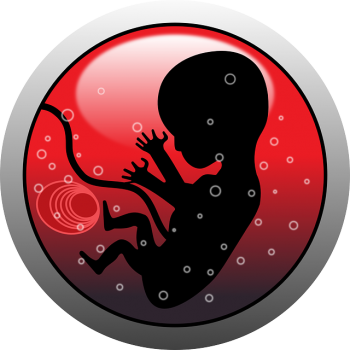Zietchick Research Institute discovers that preemies make their own pregnancy hormones
Zietchick Research Institute has found that premature infants produce their own version of the pregnancy hormone—human chorionic gonadotropin—after birth. Human chorionic gonadotropin, commonly called by its abbreviation—hCG—is produced in large quantities during pregnancy. It is first made by the developing embryo after conception and soon after that, it is made by the placenta.

photo/ OpenClipartVectors via pixabay
Because hCG can be detected in the mother’s blood within days of conception, it is the hormone that is generally measured to help make the diagnosis of pregnancy. It can be measured by a urine test or a blood test. One of the major functions of hCG during pregnancy it to cause progesterone to be secreted. Zietchick Research Institute explains that without adequate levels of hCG, the uterus—also known as the womb– does not develop the thick layer of blood vessels that it needs. Therefore, without hCG, pregnancy cannot be sustained.
Interestingly, receptors for hCG are found in the eye, brain, lung and kidney. When babies are in the womb, all of these organs are exposed to hCG. The normal length of a pregnancy is about 9 months long. Researchers, at Zietchick Research Institute, explain that when babies are developing in utero, they are exposed to hCG for the full length of pregnancy. However, when they are born prematurely, they are separated from the placenta early. Therefore, preemies cannot rely on using placentally-produced hCG to promote their growth and development.
In a recent study, scientists at Zietchick measured hCG levels in over 100 premature babies within a few days of birth and again at one month after birth. Human chorionic gonadotropin detected in the first days of life may represent hormone that had been produced by the placenta before the babies had been were born. However, the researchers found that the premature infants had the same levels at one month of life. This means that preemies probably make their own version of hCG. This was not been known before. This information will be important to optimizing health outcomes for premature infants.
This study was conducted by scientists at Zietchick Research Institute (ZRI) collaboration with researchers from Michigan State University College of Human Medicine. Director of ZRI, Dr. Tammy Movsas, was the lead investigator on the study.
Author: James Daniel
Reference:
The postnatal presence of human chorionic gonadotropin in preterm infants and its potential inverse association with retinopathy of prematurity. Movsas TZ, Paneth N, Gewolb IH, Lu Q, Cavey G, Muthusamy A. Pediatr Res. 2019 Sep 19.. [Epub ahead of print] PMID: 31537012














